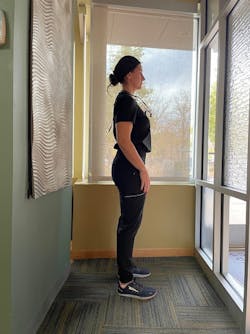Establishing the ideal posture for your practice: Let’s put it in neutral
Dental hygiene is an exciting, rewarding, and fascinating career. Dental hygienists are instrumental in educating patients on oral and systemic health. In addition, they are crucial health-care providers, playing an essential role in improving their patients’ lives. However, while this career is an excellent choice, it does come with risks.
A profession at risk
Dental hygienists are at risk for developing musculoskeletal disorders (MSDs) that result in not only pain, but an increased risk of early retirement, disability, and surgery. According to the research, between 64% and 96% of dental hygienists report pain, fatigue, and the development of MSDs.1–3
Why are these numbers so high? Practicing dental hygiene typically involves several ergonomic risk factors, including repetitive motion, awkward posture, bending, leaning, twisting, reaching, and holding the body in unnatural positions over an extended period.2 Decreased time for rest is another risk factor for dental hygienists. When the body is at rest, it can repair damage and reduce pain and injury. Unfortunately, the typical hygiene schedule does not allow for sufficient rest time. Hence, the damage accumulates, eventually making itself known in the form of pain, fatigue, reduced range of motion, and MSDs.
Related reading:
- Nearly 100% of hygienists have pain on the job. What can you do?
- Common ergonomic errors and solutions for dental hygienists
- Ergonomic synergy: Creating a functional, low-stress workspace
Luckily, being a dental hygienist does not necessarily mean these disorders are inevitable. It takes learning about and incorporating ergonomic principles into your daily practice to mitigate these risks. The most crucial principle to understand is that of neutral posture.
The power of staying neutral
The human body is a wonder of engineering and is capable of some fantastic things. However, the body has its limits, andOne can determine posture from a profile view. When standing, the ear should be in line with the shoulder, which is then in line with the hip and the foot (figure 1).
Thus, there should be a straight line from the ear to the shoulder, hip, and foot. When seated, the concept is the same; the ear, shoulder, and hip should all be in alignment.
This posture allows for the skeleton to hold the body up whileSitting with the thighs parallel to the floor, combined with the need to lean forward, causes the pelvis to roll back and the lower lumbar curve to flatten.3
It is crucial to establish this posture before beginning to work on the patient. Neutral posture is a foundation or “home base” for the hygienist. The patient should then be positioned properly to support this neutral posture. While practicing, the dental hygienist will often adjust their body to the patient’s position when it should be the other way around. Ergonomics is about adjusting the environment to fit the person, and establishing and maintaining neutral posture is the first step in working ergonomically in dentistry.
Prioritize proper ergonomics for a healthier, happier career
It should be emphasized that MSDs are the number one reason individuals in the United States are on disability.4 In addition, they are the number one reason why dentists and dental hygienists retire early, reduce their hours, go on disability, or need surgery. Learning proper ergonomics, including neutral posture, will help mitigate these risks and allow dental hygienists to enjoy a long, healthy career.
References
- Hayes M, Cockrell D, Smith DR. A systematic review of musculoskeletal disorders among dental professionals. Int J Dent Hyg. 2009;7(3):159-165. doi:10.1111/j.1601-5037.2009.00395.x
- Humann P, Rowe D. Relationship of musculoskeletal disorder pain to patterns of clinical care in California dental hygienists. J Dent Hyg. 2015;89(5):305-312.
- Valachi B. Practice Dentistry Pain-Free. Posturedontics Press; 2008.
- Musculoskeletal conditions. World Health Organization. February 8, 2021. Accessed July 3, 2021. https://www.who.int/news-room/fact-sheets/detail/musculoskeletal-conditions
About the Author
Stephanie Botts, BSDH, RDH, CEAS
Stephanie Botts, BSDH, RDH, CEAS, has been a clinical dental hygienist for over 17 years. She is a certified ergonomics assessment specialist providing both in-office and virtual ergonomics consulting and coaching to dental professionals. She also provides CE to dental and dental hygiene associations on ergonomics. Stephanie believes that by learning effective strategies to optimize proper ergonomics, dental professionals can practice pain-free and ensure career longevity. She can be reached at [email protected] or on Instagram at @steph.polishedposture.



